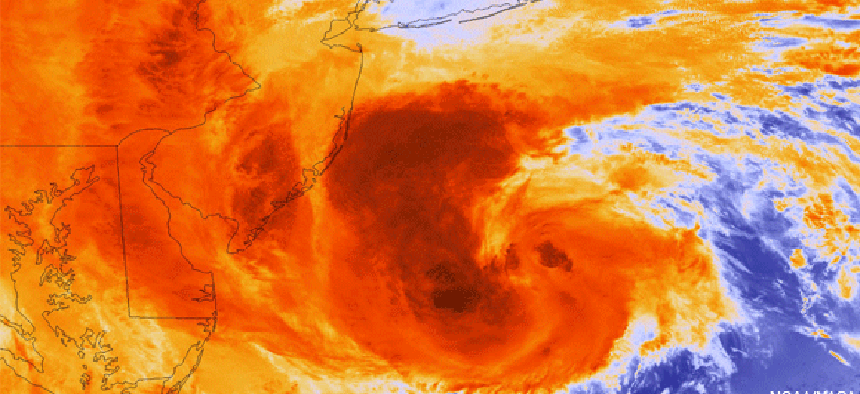NOAA's upgraded technology draws a bead on hurricane season


Connecting state and local government leaders
With a busy storm season ahead, the agency adds more supercomputing muscle to its modeling programs.
June is upon us, which means hurricanes may not be far behind. And according to the National Oceanic and Atmospheric Administration, this could be a bad year.
NOAA’s Atlantic Hurricane Season Outlook says there is a 70 percent likelihood of between 13 and 20 named storms, of which seven to 11 could become hurricanes with winds of 74 mph or higher. We are looking at the real possibility of between three and six major hurricanes of Category 3 and stronger, with winds of 111 miles per hour or more.
Of course, NOAA doesn't know if any of these possible storms will make landfall even if they do form. Many hurricanes spin around out in the ocean and don't cause any trouble other than forcing ships and aircraft to route around them. But it only takes one good hit to affect thousands of lives and do millions of dollars in property damage. One only needs to look as far back as Hurricane Katrina or Superstorm Sandy to what can happen. And the die is cast for a bad year.
“This year, oceanic and atmospheric conditions in the Atlantic basin are expected to produce more and stronger hurricanes,” wrote Gerry Bell, lead seasonal hurricane forecaster with NOAA’s Climate Prediction Center in a briefing about the pending storms. “These conditions include weaker wind shear, warmer Atlantic waters and conducive winds patterns coming from Africa."
NOAA does a good job these days using technology to predict dangerous storms, but this year it may have its work cut out for it with so much bad weather predicted, which is bad news for those of us living along the East Coast, and especially for those in the South, the typical target zone. Thankfully, NOAA will have some new prediction weapons at its disposal, if it can get them online and working before the storms hit.
Right now, the predictions are pretty good, as was evident by the extremely accurate modeling of Superstorm Sandy. NOAA predicted the storm's intensity and impact, and projected the correct time of its landfall within six hours.
To improve predictions even more, NOAA is working to bring a new supercomputer online in July, before hurricane season reaches its peak. The new system will run an upgraded hurricane weather research and forecasting model that provides significantly enhanced depiction of storm structure and improved storm intensity forecast guidance.
The National Hurricane Center uses several dozen modeling programs combining factors such as historical data and atmospheric information to predict a storm’s path.
And adding Doppler radar to its fleet of sensor-laden, storm-hunting aircraft, could mean a 10 to 15 percent increase in prediction accuracy and speed, according to NOAA.
At the moment, the uncertain element in NOAA’s big picture has to do with satellites. The GOES 13 satellite that NOAA uses to watch the East Coast. It is having some problems, and this is not the first time. There are plans to reposition GOES 14 to watch over the hurricane target zone if 13 can't get fully operational before the hurricane season begins in earnest. With a violent season predicted, NOAA needs to make sure that all of its resources are working and in place, if not by June 1, then certainly by August when the season traditionally heats up. We can't fight hurricanes, but with enough warning people can prepare for them, or, if nothing else, get the heck out of the way.
To learn about what you can do to prepare for a hurricane, visit the government's http://www.ready.gov/hurricanes storm preparation website and take their sage advice.




